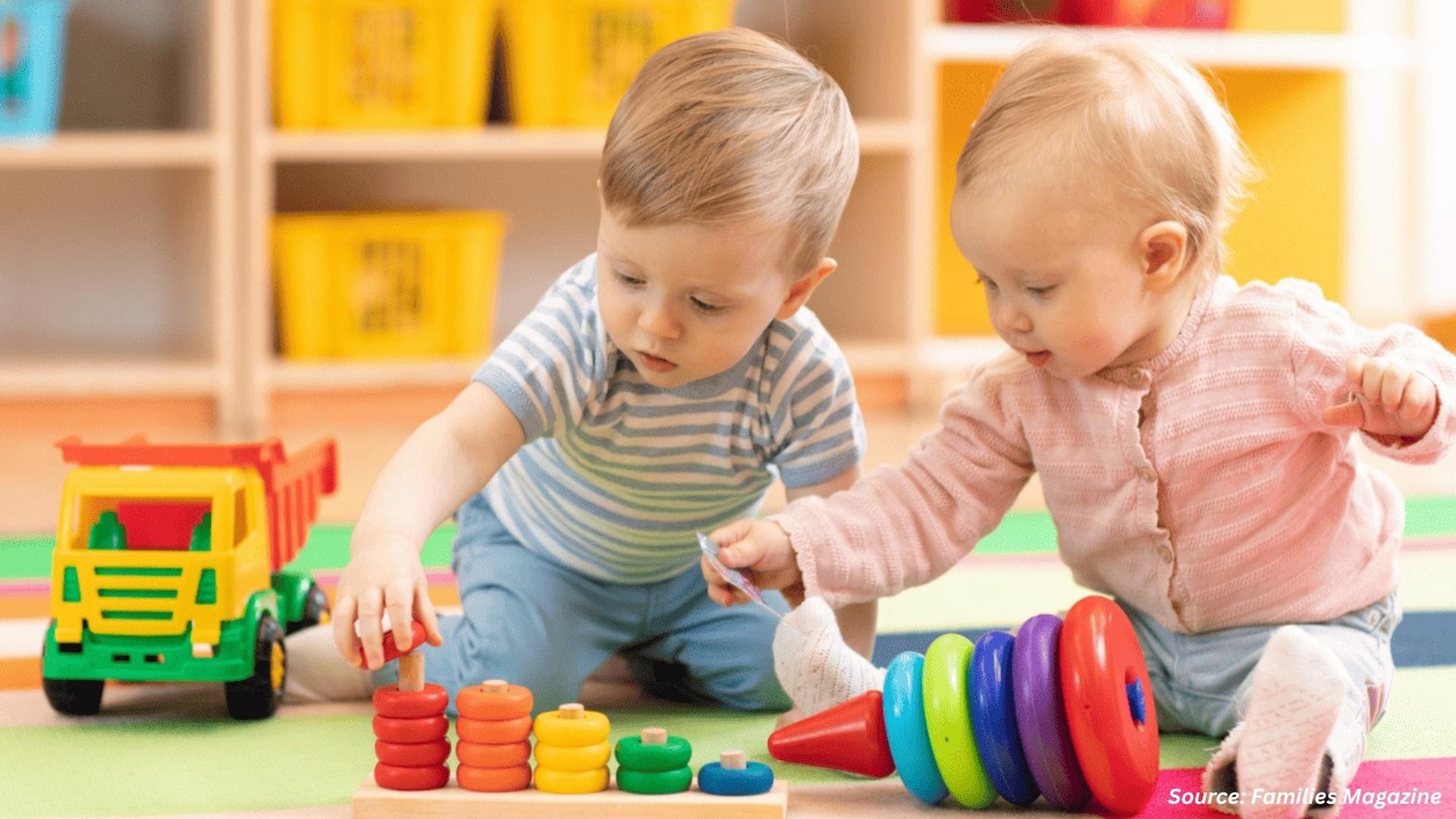
Baby Toys Market by Product Type (Board Games, Soft Toys & Dolls, Arts & Craft Toys, Vehicles, Musical Toys & Rattles, and Others), by Material Type (Cotton, Plastic, Silicon, and Foam), by Age-Group (Infants and Toddlers), and by Distribution Channel (Supermarkets & Hypermarkets, Convenience Stores, Specialty Stores, Online Retailing, and Others) – Global Opportunity Analysis and Industry Forecast, 2024– 2030
Market Definition
The global Baby Toys Market size was valued at USD 13.97 billion in 2023 and is predicted to reach USD 19.28 billion by 2030 with a CAGR of 4.4% from 2024-2030. The baby toy market offers products designed for infants and toddlers to entertain, educate, and stimulate their senses.
These items are sold through various channels to meet the needs of parents, caregivers, and organizations working with young children. It is a significant part of the toy industry and plays a crucial role in early childhood development and entertainment.
Market Dynamics and Trends
The demand for baby toys is growing, as companies innovate and offer toys that aid parents in instilling valuable social skills and lessons in their children. This, in turn, boosts toy sales and elevates the growth of the toy market.
For instance, in February 2023, LEGO reintroduced LEGO Friends with a variety of characters of different skin tones, cultural backgrounds, disabilities, relationships, and authentic personalities. These toys help parents to incorporate social development, respect for others, and learn equality at a young age in their children.
Moreover, the rising desire for educational toys, such as building blocks, alphabet puzzles, and shape sorters, which teach kids about shapes, colors, and objects, increases the demand for baby toys. These toys are highly engaging for children and their increasing popularity plays a significant role in boosting the market.
However, the high production costs associated with premium baby toys act as a constraint on the toy market’s growth since many parents are unable to afford expensive toys, thus limiting the market’s potential expansion.
In contrast, AI-integrated smart toys, providing personalized learning, safety features, and multisensory experiences, are set to expand the appeal of children's toys in the market. This expansion in appeal creates substantial growth opportunities for the future of the baby toy market.
Market Segmentations and Scope of the Study
The baby toys market is segmented based on product type, material type, age, distribution channel, and region. Based on product type, the market is segmented into board games, soft toys & dolls, arts & crafts toys, vehicles, musical toys & rattles, and others. Based on material type, the market is classified into cotton, plastic, silicon, and foam.
Based on age, the market is divided into infants and toddlers. Based on distribution channels, the market is distributed into supermarkets & hypermarkets, convenience stores, specialty stores, online retailing, and others. The regional breakdown includes regions such as North America, Europe, Asia-Pacific, and the Rest of the World (RoW).
Geographical Analysis
North America holds the dominant share of the baby toys market and is expected to continue its dominance during the forecast period. This is attributed to factors such as the parents' hectic schedules as a result of their workplace jobs resulting in them purchasing specialized toys to keep their infants occupied and active.
According to Canada Statistics, the unemployment rate in Canada accounted for 5.20% in Oct 2022, which is quite low compared to other countries and represents a high rate of employment in Canada. Moreover, the introduction of toys by key market players that replicate characters from cartoon shows is driving the expansion of toy firms in this region.
For instance, in February 2022, Hasbro launched innovative toys for key franchises such as Power Rangers, Transformers, Baby Alive, My Little Pony, and others to craft more memorable experiences for children and motivate them to aspire for greater accomplishments, thereby contributing to the growth of the toy market.
On the other hand, in the Asia-Pacific region, the baby toys market is steadily growing, fueled by its status as a major manufacturing hub. The presence of skilled labor and cost advantages in countries such as China, Indonesia, and Vietnam are significantly contributing to the market's growth.
According to the ICTI Ethical Toy Program as of 2023 China, Indonesia, and Vietnam hold the highest number of certified factories under the Ethical Toy Program. As a result, there is an increase in the level of support provided to toy factories in these countries, actively contributing to the expansion of the baby toy market.
Also, the governments in countries including India are proactively fostering the growth of traditional toy industries through initiatives such as hosting toy fairs and supporting local manufacturers. These efforts not only increase consumer engagement with traditional toys by raising awareness of their cultural and historical significance but also increase sales of traditional toys that contribute expansion of the toy market in these regions, driven. For instance, in March 2021, the Government of India (GOI) launched ‘Toycathon’ a toy fair to showcase and promote emerging Indian toy industries on a global stage.
Competitive Landscape
Various market players operating in the baby toys industry include Lego System A/S, Mattel Inc., Hasbro Inc., Bandai Namco Holdings Inc., Spin Master, Kids II Inc., Nintendo Co. Ltd, Brandstatter Group, Tomy Company Ltd., and Basic Fun. These market players continue to adopt various market development strategies including product launches, partnership agreements, and others to maintain their dominance in the baby toys market.
For instance, in August 2021, Thomas & Friends a global preschool company partnered with Lee Scott and launched the Thomas & Friends friendship set designed to help preschoolers build socio-emotional skills. Designing and launching of games and toys by companies that enhance the social, and emotional skills of children in turn demands the growth of the market.
Additionally, in March 2021, BASIC FUN along with its subsidiary K’Nex partnered with Kroeger Inc. in North America to launch constructive toys. Such toys help toddlers to develop their analytical skills attracting parents for its purchase. Thus, the adoption of such strategies by companies leads to the growth of the market.
Key Benefits
-
The report provides quantitative analysis and estimations of the baby toys market from 2024 to 2030, which assists in identifying the prevailing market opportunities.
-
The study comprises a deep-dive analysis of the current and future baby toys market trends to depict prevalent investment pockets in the market.
-
Information related to key drivers, restraints, and opportunities and their impact on the baby toys market is provided in the report.
-
A competitive analysis of the players, along with their market share is provided in the report.
-
SWOT analysis and Porter's Five Forces model are elaborated in the study.
-
Value chain analysis in the market study provides a clear picture of the roles of stakeholders.
Baby Toys Market Key Segments
By Product Type
-
Soft Toys & Dolls
-
Arts & Craft Toys
-
Vehicles
-
Musical Toys & Rattles
-
Others
By Material
-
Cotton
-
Plastic
-
Silicon
-
Foam
By Age
-
Infants
-
Toddlers
By Distribution Channel
-
Supermarkets & Hypermarkets
-
Convenience Stores
-
Specialty Stores
-
Online Retailing
-
Others
By Region
-
North America
-
The U.S.
-
Canada
-
Mexico
-
-
Europe
-
The UK
-
Germany
-
France
-
Italy
-
Spain
-
Denmark
-
Netherlands
-
Finland
-
Sweden
-
Norway
-
Russia
-
Rest of Europe
-
-
Asia-Pacific
-
China
-
Japan
-
India
-
South Korea
-
Australia
-
Indonesia
-
Singapore
-
Taiwan
-
Thailand
-
Rest of Asia-Pacific
-
-
RoW
-
Latin America
-
Middle East
-
Africa
-
REPORT SCOPE AND SEGMENTATION:
|
Parameters |
Details |
|
Market Size in 2023 |
USD 13.97 Billion |
|
Revenue Forecast in 2030 |
USD 19.28 Billion |
|
Growth Rate |
CAGR of 4.4% from 2024 to 2030 |
|
Analysis Period |
2023–2030 |
|
Base Year Considered |
2023 |
|
Forecast Period |
2024–2030 |
|
Market Size Estimation |
Billion (USD) |
|
Growth Factors |
|
|
Countries Covered |
28 |
|
Companies Profiled |
10 |
|
Market Share |
Available for 10 companies |
|
Customization Scope |
Free customization (equivalent up to 80 working hours of analysts) after purchase. Addition or alteration to country, regional, and segment scope. |
|
Pricing and Purchase Options |
Avail customized purchase options to meet your exact research needs. |
KEY PLAYERS
-
Lego System A/S
-
Mattel Inc.
-
Hasbro Inc.
-
Basic Fun
-
Bandai Namco Holdings Inc.
-
Spin Master
-
Kids II Inc.
-
Nintendo Co. Ltd.
-
Brandstatter Group
-
Tomy Company Ltd.




















 Speak to Our Analyst
Speak to Our Analyst

























